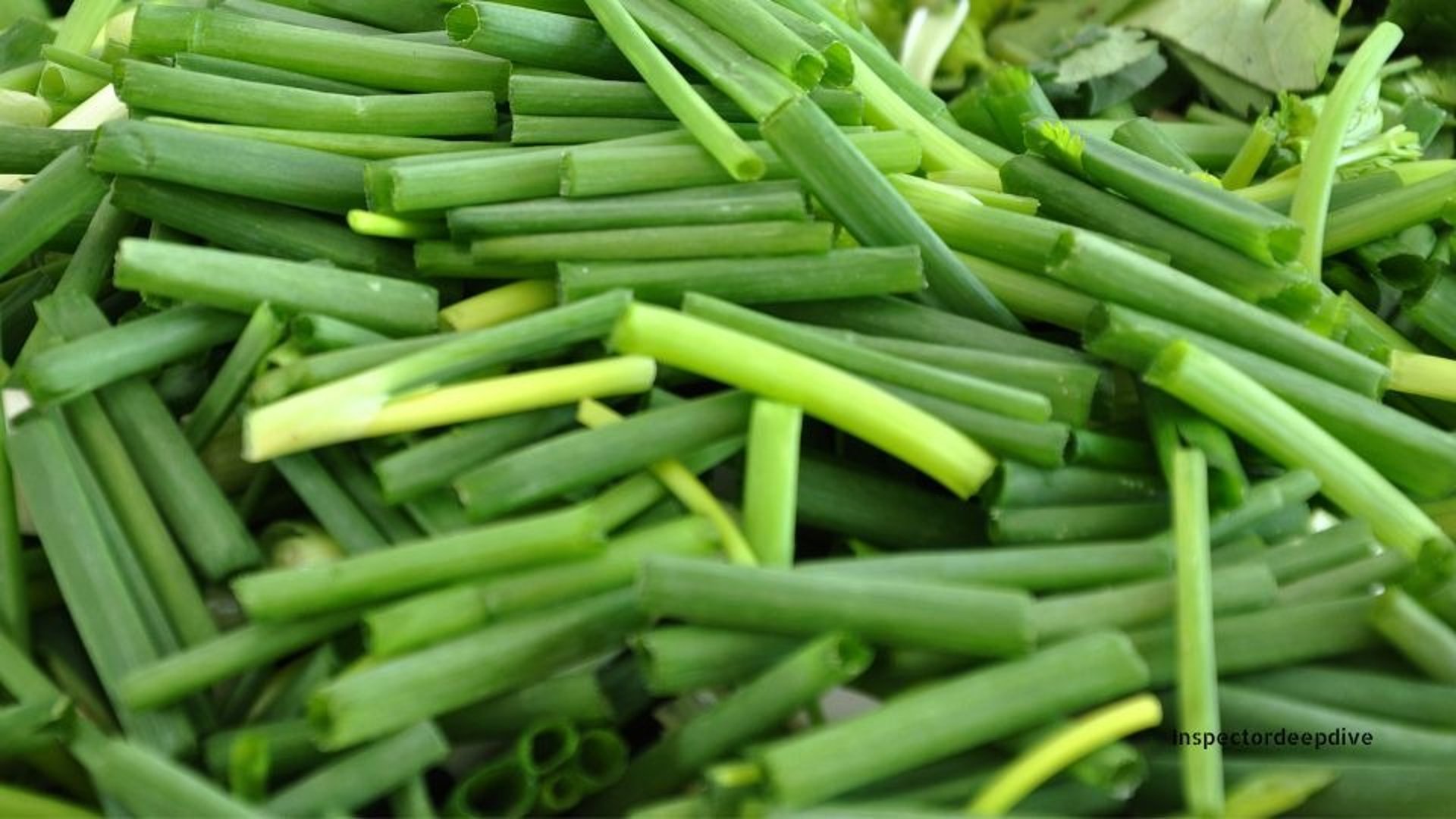
Scallions and Health: What Does the Science Say in 2025?

Scallions and Health: What Does the Science Say in 2025?
Family: Amaryllidaceae (formerly classified under Alliaceae)
Scientific Name: Allium fistulosum (true scallion)
Scallions are defined by harvest stage, not species. They are picked young, with a slender white base and long hollow green leaves. Unlike mature onions, they do not form large bulbs.
True scallions (A. fistulosum) never develop a significant bulb, even when fully grown. Spring onions labeled as A. cepa may show slight bulbing if left in the soil longer.
Both types are used interchangeably in cooking due to similar texture and mild flavor.
Origin and Varieties
Allium fistulosum likely originated in Central Asia, with cultivation dating back over 5,000 years in China and Japan. It spread globally through trade and adaptation to temperate climates.
Common varieties include:
White Lisbon: Fast-growing, cold-tolerant, widely cultivated.
Tokyo Long White: Long stems, favored in Asian cuisine.
Olympus: Uniform growth, common in commercial production.
Red Beard: Purple-tinged base, slightly more pungent.
No genetically modified scallion varieties are approved for commercial use.
Seasonality & Availability
Scallions are cool-season crops, typically planted in early spring or fall and harvested within 60–80 days. Peak availability in the Northern Hemisphere runs from April to June.
However, due to staggered planting, greenhouse growing, and global import networks, fresh scallions are available year-round in most supermarkets.
They are sold with roots trimmed, both white and green parts intact.
Nutritional Breakdown: Scallions
(Raw, per 30g serving average)
Energy (Calories): 10 kcal
Very low energy density; contributes volume without caloric load.Water: 27 g
High moisture content supports hydration and crisp texture.Protein: 0.54 g
Contains trace amino acids; not a meaningful protein source.Total Fat: 0.06 g
Negligible lipid content.Saturated: 0.01 g
Monounsaturated: 0.01 g
Polyunsaturated: 0.02 g
Carbohydrates: 2.19 g
Primarily simple sugars and structural fibers.Dietary Fiber: 0.78 g
Mix of soluble and insoluble fiber; minimal impact on daily intake.Sugars: 0.69 g (glucose, fructose, sucrose)
Natural sweetness increases slightly during storage.
Vitamins
Vitamin K: 62.1 µg (173% RDI)
Involved in blood coagulation and bone metabolism; high relative value due to small RDI baseline.Folate (B9): 19.2 µg (16% RDI)
Required for DNA synthesis; relevant during periods of growth.Vitamin C: 5.64 mg (21% RDI)
Antioxidant role; supports collagen formation; degrades with heat and storage.Vitamin A (as beta-carotene): 7.2 µg (3% RDI)
Provitamin A carotenoid converted to retinol in small amounts; activity limited by low concentration.Vitamin B6 (Pyridoxine): 0.03 mg (8% RDI)
Supports amino acid metabolism; marginal contribution per serving.
Note: Percentages based on adult reference values (RDI): Vitamin K = 36 µg, Folate = 120 µg, Vitamin C = 27 mg, Vitamin A = 240 µg, Vitamin B6 = 0.4 mg.
Minerals
Potassium: 82.8 mg (6% RDI)
Supports fluid balance and nerve signaling.Calcium: 21.6 mg (7% RDI)
Minor structural mineral contribution.Iron: 0.45 mg (8% RDI)
Non-heme iron; absorption influenced by dietary context.Magnesium: 6 mg (5% RDI)
Cofactor in metabolic enzymes.Phosphorus: 11.1 mg (5% RDI)
Structural component of bones and ATP.Zinc: 0.15 mg (5% RDI)
Supports immune function at trace levels.
Also contains trace amounts of manganese and copper.
Bioactive Compounds
Flavonoids: Quercetin, kaempferol
Concentrated in outer layers; studied for antioxidant effects in vitro.Organosulfur Compounds: Allicin (when cut), thiosulfinates
Formed upon tissue damage; responsible for aroma and investigated for antimicrobial properties under lab conditions.Chlorophyll: Present in green leaves
No established physiological function in humans; often marketed without evidence.
How Scallions Affect the Body
When consumed raw, scallions release volatile sulfur compounds such as allicin, which degrade quickly and show free radical scavenging ability in test tubes.
Fiber content may support colonic fermentation, though total intake per serving is low.
Vitamin K contributes to coagulation factor synthesis. One 30g serving exceeds the daily reference intake, but no adverse effect occurs in healthy individuals.
No clinical evidence demonstrates that scallion consumption alters disease risk, metabolic markers, or organ function.
Culinary Use and Preparation
Scallions are used whole, sliced, or chopped. The white base is often sautéed or grilled; the green top is added fresh to salads, soups, stir-fries, and garnishes.
Cutting triggers enzymatic reactions that produce mild lachrymatory compounds less intense than in mature onions.
Cooking reduces pungency and alters flavonoid and sulfur compound stability.
Selection and Storage
Choose firm stalks with bright green color and clean white bases. Avoid wilted, slimy, or sprouting specimens.
Store unwashed in the refrigerator, wrapped in a damp paper towel inside a loosely sealed bag. Use within 7–14 days.
Do not freeze whole; chopped scallions may be frozen but lose texture.
Safety Notes
Generally safe for most individuals.
May cause gastrointestinal discomfort in sensitive people (e.g., IBS).
Can exacerbate heartburn in those with GERD.
Allergic reactions are rare but documented.
No toxicity concerns at culinary doses.
Scientific Research (2024–2025)
Studies are exploring:
Bioavailability of quercetin from allium greens.
Role of scallion extracts in natural food preservation.
Observational data on allium vegetable intake and metabolic health.
No large-scale human trials confirm functional health benefits.
Conclusion
Scallions are a low-calorie vegetable with measurable vitamin K, vitamin C, folate, and bioactive compounds like quercetin and organosulfur molecules. They contribute freshness and flavor to meals.
They are not required in the diet.
No unique physiological role has been established.
But within diverse eating patterns, they represent one of many plant-based sources of micronutrients and phytochemicals.
As research progresses, their presence will be clarified not promoted.
© 2025 food.InspectorDeepDive.com. All rights reserved. Content may not be copied or republished without permission.
This article is for informational purposes only. InspectorDeepDive.com does not provide medical advice. Always consult a licensed healthcare provider before making dietary or health decisions.
